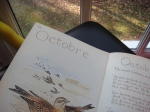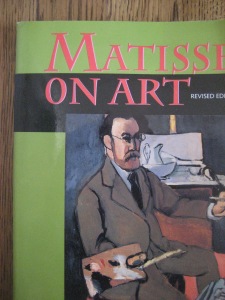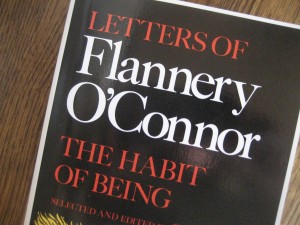
Windows fascinate me. Where they are, what they frame. Panes or no panes. I prefer panes, not surprising since I like to break things into smaller pieces. Some writers prefer a wall when they’re working, but not me. Windows … Continue reading


Windows fascinate me. Where they are, what they frame. Panes or no panes. I prefer panes, not surprising since I like to break things into smaller pieces. Some writers prefer a wall when they’re working, but not me. Windows … Continue reading

Snow fills me with wonder. It allows me to look at the world as I did when I was a child. Just look. Everything that we see in our daily life is more or less distorted by acquired habits… the … Continue reading
Matisse wrote, “To paint an autumn landscape I will not try to remember what colors suit this season, I will be inspired only by the sensation that the season arouses in me: the icy purity of the sour blue sky will express the season just as well as the nuances of foliage.” I’m not sure I agree, Henri. At least not today, standing at my desk with the bold scarlets to my right.
When I was cleaning out my study, I rediscovered this journal written in 1906 by the English naturalist, Edith Holden, who drowned in the Thames in 1920, at the age of 49. I have the French version, and I wish I’d written in the book when and where I found it.

“October” by Annie Dillard
In The Maytrees, Annie Dillard wrote,
She herself hoped to paint, soberly, when she got old.
In 2009, a week before I headed to Provincetown, I read in The Provincetown Banner that, at the age of 64, Annie Dillard was doing just that. Although she usually painted between books, now she was giving up writing for painting. After arriving in P-town, I visited the gallery where her work was being shown and brought home this small painting. It hangs in my study. With a slight turn of my head to the left, I can see it. Called “October,” it’s the view from Pleasant Point Town Landing.
 There’s a line that connects writers and painters. In August I wrote about writer James Baldwin crediting painter Beauford Delaney with teaching him how to see and how to trust what he saw. Henri Matisse wrote often about painting. (Matisse on Art by Jack Flam). With “The Dance” at The Barnes Foundation, Matisse gave the viewer only part of the picture to free him to imagine so much more. As writers, we want to give the reader this same freedom. We want to suggest what lies beyond the page. Robert Boswell writes brilliantly about this half-known world we’re trying to create.
There’s a line that connects writers and painters. In August I wrote about writer James Baldwin crediting painter Beauford Delaney with teaching him how to see and how to trust what he saw. Henri Matisse wrote often about painting. (Matisse on Art by Jack Flam). With “The Dance” at The Barnes Foundation, Matisse gave the viewer only part of the picture to free him to imagine so much more. As writers, we want to give the reader this same freedom. We want to suggest what lies beyond the page. Robert Boswell writes brilliantly about this half-known world we’re trying to create.
Maureen Doallas also wrote about Annie Dillard’s move to painting at her blog Writing Without Words. On Annie Dillard’s website, you can see more of her work, and you can also purchase limited edition prints with the proceeds going to Partners in Health.
Which leads to another….
For the last post, I was looking for a quote by Henri Matisse that I never found by the way about not needing to show the whole shape of something in order for the viewer to grasp what you’re creating. In fact, for the Barnes Foundation mural, Matisse intentionally showed only part of the dance so that the viewer would follow the painting off the page. All of which I wish I’d put in the last post…Anyway I found myself flipping through my favorite book on Matisse, Matisse on Art by Jack Flam, and rereading all my underlinings.
 Then came some interest in an older post of mine on a quote by Flannery O’Connor from The Habit of Being: The Letters of Flannery O’Connor: “…I don’t know so well what I think until I see what I say; then I have to say it over again.”
Then came some interest in an older post of mine on a quote by Flannery O’Connor from The Habit of Being: The Letters of Flannery O’Connor: “…I don’t know so well what I think until I see what I say; then I have to say it over again.”
So I noticed that an interviewer, in the summer of 1931, noticed that Matisse was “looking for a way to summarize again what he had been saying…I had to smile when I realized that he was striving for order in his conversation just as in his paintings.” I love that Matisse did that. I do it all the time.
Is that all? No, there’s more.
Anyway anyway, in the comments to that older post, we’ve been discussing that Frank Conroy “used to say that in his own writing he’d read and re-read what he’d written the day before until he knew what to do next.”
Matisse also said, “…I continually react until my work comes into harmony with me. As someone who writes a sentence, reworks it, makes new discoveries…At each stage, I reach a balance, a conclusion. At the next sitting, if I find that there is a weakness in the whole, I make my way back into the picture by means of the weakness–I re-enter through the breach–and I reconceive the whole. Thus everything becomes fluid again…At the final stage the painter finds himself freed and his emotion exists complete in his work. He himself, in any case, is relieved of it.”
Which is the way I find that I’m writing these days.
Now I’m relieved of this little trail.
“Obituaries, I believe, are really less about death than the odd shapes life takes, the patterns that death allows us to see.”
The Bridge of Sighs, Richard Russo
But it’s not death that allows us to see the patterns. Death just gives us the last few strokes, allows us to write the last few sentences.
It’s the writing that allows us to see–the process of writing and the finished product.
We don’t need to know the shape or pattern before we start. Henri Matisse wrote, “…I am driven by an idea that I really only grasp as it grows with the picture.” The same is true of writing.
Writing is the brush with which writers make shapes. One of the things that makes writing so exciting is the discoveries we make as we write.
For those afraid to start, Matisse wrote, “…each new stroke diminishes the importance of the preceding ones.”
So let’s write and let the shapes emerge…
You must be logged in to post a comment.